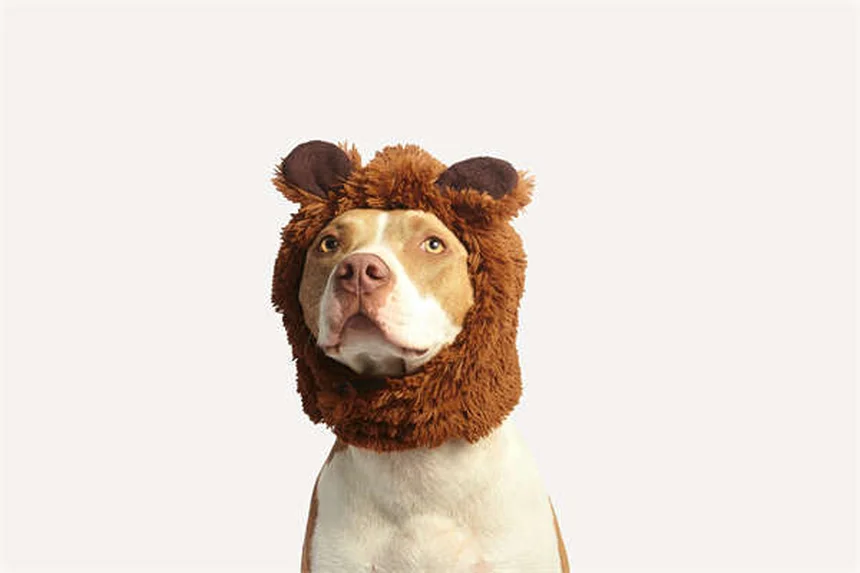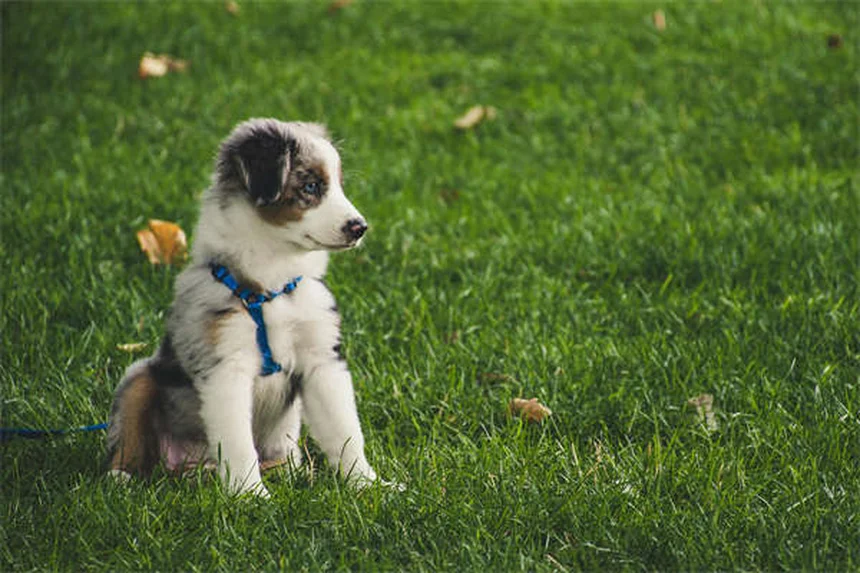Advertisement
Why are my dog's eyes watery? The answer is: epiphora - that's the medical term for excessive tear production in dogs. I've seen this condition countless times in my 10 years working with pet owners, and let me tell you, while it's common, it's not something you should ignore. Those reddish-brown stains under your pup's eyes? That's from porphyrin, a natural pigment in tears that becomes super noticeable on light-colored fur.Most cases of watery eyes in dogs are harmless, but here's what you need to watch for: if the discharge turns greenish-yellow or your dog starts squinting, that's your signal to call the vet ASAP. Some breeds like Poodles and Shih Tzus are just prone to watery eyes - it's part of their charm! But whether it's allergies, irritants, or something more serious, I'll walk you through everything you need to know about your dog's watery eyes.
E.g. :Pet Rat Varieties: 7 Common Types & Their Unique Traits
Advertisement
- 1、What's Going On When Your Dog's Eyes Get Watery?
- 2、Why Is Only One Eye Watering?
- 3、What's Making Your Dog's Eyes Water?
- 4、How Vets Figure Out the Cause
- 5、Treating Your Dog's Watery Eyes
- 6、Living With a Watery-Eyed Dog
- 7、Your Watery Eye Questions Answered
- 8、Beyond the Basics: More About Dog Eye Health
- 9、The Science Behind Those Tear Stains
- 10、Watery Eyes Through the Seasons
- 11、Breed-Specific Eye Concerns
- 12、The Future of Canine Eye Care
- 13、FAQs
What's Going On When Your Dog's Eyes Get Watery?
Understanding Epiphora in Dogs
Ever notice those tear stains under your pup's eyes? That's epiphora - the fancy medical term for when your dog's eyes produce more tears than usual. Here's the deal: those reddish-brown stains come from porphyrin, a natural pigment in tears that shows up dramatically on light-colored fur.
Now, let's talk about how dog eyes work. Tears aren't just for crying - they keep your dog's eyes moist and clean. When dust, pollen, or other irritants bother their eyes, extra tears help wash the gunk away. Some breeds like Poodles and Shih Tzus naturally have more watery eyes - it's just part of their charm! But if you see greenish-yellow discharge or your dog keeps squinting, that's your cue to call the vet.
Spotting the Signs of Watery Eyes
How can you tell if your dog's tearing up more than usual? Look for:
- Damp fur under the eyes (like they've been crying)
- Reddish-brown stains on their face
- Pawing at their eyes (the dog equivalent of rubbing itchy eyes)
- Eyes that look extra shiny or glassy
| Normal Tearing | Problem Tearing |
|---|---|
| Clear tears | Cloudy or colored discharge |
| No discomfort | Squinting or pawing at eyes |
| Mild staining | Heavy staining with odor |
Why Is Only One Eye Watering?
 Photos provided by pixabay
Photos provided by pixabay
The Mystery of Single-Eye Watering
Ever notice your dog's only one eye seems extra watery? Here's why that might happen:
Sometimes a single eyelash grows the wrong way, irritating just that eye. Or maybe the tiny drainage duct on that side got clogged - imagine a tiny tear drain backing up! In rare cases, it could signal a corneal ulcer (that's a scratch on the eye's surface). If that one watery eye looks painful or has unusual discharge, don't wait - get to the vet pronto.
When to Worry About One Watery Eye
Here's a quick guide:
- Not urgent: Clear tears, no squinting, no redness
- Vet visit needed: Green/yellow gunk, constant pawing, visible discomfort
- Emergency: Eye looks cloudy, your dog won't open it, obvious pain
What's Making Your Dog's Eyes Water?
Common Irritants and Problems
Think of your dog's watery eyes like a car's check engine light - it's telling you something needs attention. The main culprits fall into three categories:
1. Eye Irritants: Just like us, dogs react to pollen, dust, and other airborne annoyances. Some pups even have eyelashes that grow inward (ouch!) or eyelids that don't close right. Ever heard of "cherry eye"? That's when a gland pops out where it shouldn't - looks weird but is fixable!
2. Drainage Issues: Some breeds (looking at you, Cocker Spaniels) are born with tear ducts that don't work right. Others develop blockages from gunk buildup. It's like having a clogged sink - the tears have nowhere to go but down their face.
3. Breed Traits: Flat-faced breeds (we're talking Pugs, Pekingese) often have eyes that bulge slightly, making proper tear drainage tricky. For them, some tearing is normal - just part of their adorable package!
 Photos provided by pixabay
Photos provided by pixabay
The Mystery of Single-Eye Watering
Here's something interesting - did you know glaucoma (high eye pressure) can cause watery eyes too? It's not common, but it explains why vets sometimes check eye pressure when investigating tearing issues.
How Vets Figure Out the Cause
The Eye Exam Process
When you bring your dog in for watery eyes, here's what to expect:
First, the vet will do a thorough eye exam - they might use special dyes to check for scratches or measure tear production with tiny paper strips (don't worry, it's painless!). They'll look for eyelid abnormalities, check eye pressure, and examine the tear ducts. It's like detective work for dog eyes!
Special Tests Your Vet Might Do
Ever wonder how vets test for dry eye versus watery eye? They use something called a Schirmer test - a small paper strip that measures tear production. For corneal scratches, they use fluorescent dye that glows under special light. Cool, right?
Here's a pro tip: If your vet recommends these tests, don't stress. They're quick, mostly painless, and give crucial information about what's really going on with your pup's peepers.
Treating Your Dog's Watery Eyes
 Photos provided by pixabay
Photos provided by pixabay
The Mystery of Single-Eye Watering
The treatment depends entirely on the cause. For simple allergies, antihistamines might do the trick. Eyelid problems? Often needs minor surgery. Blocked tear ducts might require flushing - think of it like a plumbing service for your dog's face!
For breeds prone to tearing, regular cleaning is key. Use vet-approved wipes (never human products!) to prevent stain buildup and infections. Some popular options include Angels Eyes or Douxo wipes - just be careful not to get anything in their actual eyes!
Home Care Tips
Want to help your watery-eyed pup at home? Try these simple steps:
- Gently wipe tear stains daily with a damp cloth
- Keep hair around eyes trimmed (less irritation)
- Use filtered water (some say it reduces staining)
- Consider stainless steel bowls (easier to keep clean)
Living With a Watery-Eyed Dog
Long-Term Management
For some dogs, watery eyes are a lifelong thing. The goal isn't necessarily to stop the tearing (though that's nice when possible), but to prevent secondary problems like skin infections from constant moisture.
Did you know that yeast loves damp fur? That's why keeping the area clean and dry is so important. Regular grooming, proper diet, and occasional medicated wipes can make a world of difference in your dog's comfort.
When to Call the Vet
How do you know when watery eyes need professional attention? Ask yourself:
"Is my dog acting differently?" If they're pawing at their eyes, squinting, or seem uncomfortable, it's time for a checkup. Other red flags include thick discharge, redness, or changes in appetite or energy levels.
Your Watery Eye Questions Answered
FAQs About Dog Eye Discharge
Q: Are watery eyes painful for dogs?
Usually not, but chronic irritation can make them uncomfortable. Imagine having an eyelash poking your eye all day - not fun!
Q: Can allergies cause this?
Absolutely! Seasonal allergies are a common culprit. Some dogs even get watery eyes from food allergies.
Q: Should I use human eye drops?
Nope! Always check with your vet first. Some human products can be harmful to dogs.
Final Thoughts
Remember, every dog is different. What's normal for a Bulldog might be worrisome in a Labrador. When in doubt, snap a photo of the discharge or staining to show your vet - it can help them diagnose the issue faster!
Beyond the Basics: More About Dog Eye Health
The Emotional Side of Watery Eyes
You know what's fascinating? Dogs actually produce emotional tears just like humans do! Recent studies show that when dogs reunite with their owners after separation, their tear volume increases significantly. Isn't that heartwarming? Next time you see your pup's eyes watering when you come home, they might genuinely be crying happy tears!
But here's something even more interesting - dogs can read human emotions through our eyes. They pay close attention to our eye movements and expressions. That's why when you're sad, your dog often comes to comfort you. Their watery eyes might be responding to your emotional state too!
Nutrition's Role in Eye Health
Ever thought about how your dog's diet affects their eyes? The food they eat plays a huge role in eye health. Foods rich in omega-3 fatty acids (like fish oil) can actually help reduce excessive tearing and inflammation. Here's a quick comparison of beneficial nutrients:
| Nutrient | Benefit | Food Sources |
|---|---|---|
| Vitamin A | Supports tear production | Carrots, sweet potatoes |
| Omega-3s | Reduces inflammation | Salmon, flaxseeds |
| Lutein | Protects eye tissues | Spinach, kale |
Did you know that some commercial dog foods now include special eye health formulas? They're packed with these nutrients to keep your pup's peepers in top shape. If your dog has chronic eye issues, it might be worth checking out these specialized diets!
The Science Behind Those Tear Stains
Why Do Some Dogs Get Worse Stains Than Others?
Here's a question that puzzles many dog owners: "Why does my white dog get those ugly reddish stains while my neighbor's dark-furred dog doesn't?" The answer lies in chemistry! The porphyrin molecules in tears bind more easily to light-colored fur, creating those noticeable stains. Dark fur hides them better, but the tears are still there.
But wait - there's more to it! Some dogs naturally produce more porphyrin than others. Factors like stress, diet, and even the pH balance of their skin can affect staining. That's why two dogs of the same breed might have completely different staining patterns. It's like human fingerprints - unique to each pup!
Innovative Solutions for Tear Stains
The pet care industry has come up with some clever solutions for tear stains. Have you seen those cute little dog goggles? They're not just fashion statements - they protect eyes from wind and debris that can cause excessive tearing. Some pet owners swear by adding a teaspoon of apple cider vinegar to their dog's water (always check with your vet first!).
Here's a fun fact: There are now special dog shampoos with natural bleaching agents that help lighten stains without harsh chemicals. And get this - some groomers offer tear stain removal as part of their spa packages! Your pup can get a facial while you're at it.
Watery Eyes Through the Seasons
Seasonal Changes and Eye Health
Just like humans get seasonal allergies, dogs experience changes in their eye health throughout the year. Spring brings pollen that can irritate eyes, while winter's dry air might actually cause eyes to water more as a protective mechanism. Here's what to expect each season:
In summer, watch out for increased dust and sand particles that can get into your dog's eyes during outdoor play. Fall brings mold spores that might trigger allergic reactions. Pro tip: Keep a saline eye wash on hand during high-allergy seasons to gently flush out irritants.
Travel Considerations for Watery-Eyed Dogs
Planning a road trip with your pup? Here's something you might not have considered - car air conditioning can dry out your dog's eyes, causing them to water excessively as compensation. Try cracking the windows slightly to maintain better humidity levels. And always pack their eye medications if they have any!
Flying presents another challenge - the extremely dry cabin air can irritate sensitive eyes. Consider bringing vet-approved eye drops (the kind specifically for dogs) and maybe even a small humidifier if you're staying in a hotel. Your pup's comfort is worth that extra luggage space!
Breed-Specific Eye Concerns
Unique Challenges for Different Breeds
While all dogs can experience watery eyes, some breeds face particular challenges. Brachycephalic (flat-faced) breeds like Pugs and Bulldogs often have shallow eye sockets, making their eyes more prone to irritation and watering. On the other hand, breeds with long facial hair (think Shih Tzus and Maltese) often get hair poking into their eyes.
Here's an eye-opener: Did you know that some breeds are genetically predisposed to conditions that cause excessive tearing? For example, Cocker Spaniels often have issues with their tear ducts, while Dachshunds are prone to eyelid abnormalities. If you have one of these breeds, regular eye check-ups are extra important!
Grooming Tips for Problem Breeds
For breeds prone to watery eyes, grooming becomes more than just about looks - it's about health too! Keeping the hair around their eyes trimmed short can prevent irritation. Some owners use tiny hair clips to keep bangs out of their dog's eyes (adorable and practical!).
Ever seen those fancy doggie headbands? They're not just cute accessories - they actually help keep hair away from the eyes for breeds like Yorkshire Terriers. And here's a grooming hack: Use a fine-tooth comb to gently remove any crusties around the eyes before they cause irritation.
The Future of Canine Eye Care
Emerging Technologies in Veterinary Ophthalmology
Veterinary medicine is making huge strides in eye care! Researchers are developing new diagnostic tools like portable eye pressure monitors that give instant readings. Some vet schools are even using advanced imaging techniques originally developed for human eye surgery on dogs.
Here's something exciting - there are now contact lenses specifically designed for dogs! They're not for vision correction (dogs don't need that), but to protect injured eyes during healing. How cool is that? Your pup could be rocking some high-tech eyewear!
Holistic Approaches to Eye Health
More pet owners are exploring natural approaches to managing watery eyes. Acupuncture for dogs has shown promise in treating certain eye conditions by improving circulation. Some veterinarians recommend herbal supplements like eyebright (yes, that's really its name!) to support eye health.
But here's the important thing to remember: Always consult your vet before trying alternative treatments. What works for one dog might not work for another, and some natural remedies can interact with medications. Your vet can help you find the right balance between traditional and holistic care!
E.g. :Watery Eyes in Dogs | PetMD
FAQs
Q: How can I tell if my dog's watery eyes are serious?
A: Here's how I explain it to my clients: clear tears with no discomfort are usually fine, but you should be concerned if you see cloudy discharge, excessive squinting, or redness. I always tell pet owners to look for these red flags: if your dog is pawing at their eyes constantly, seems in pain, or has thick yellow/green gunk, it's vet time. Remember, breeds with bulging eyes (like Pugs) are more prone to issues, so they need extra attention. A good rule of thumb? If your gut says something's off, it's better to get it checked.
Q: Can I use human eye drops for my dog's watery eyes?
A: Absolutely not! This is one of the most common mistakes I see. Many human eye products contain ingredients that can be harmful to dogs. Instead, ask your vet about dog-safe options like artificial tears specifically formulated for pets. I recommend keeping some vet-approved eye wipes (like Optixcare) on hand for gentle cleaning. Pro tip: always wipe outward from the inner corner of the eye to avoid pushing debris further in.
Q: Are some dog breeds more likely to get watery eyes?
A: You bet! In my experience, brachycephalic breeds (those cute flat-faced dogs like Bulldogs and Pekingese) and small breeds like Shih Tzus and Maltese are most prone. Their facial structure often means shallow eye sockets and problematic tear drainage. I always tell owners of these breeds to make eye care part of their regular grooming routine - daily gentle cleaning can prevent stains and infections.
Q: What home remedies are safe for dog watery eyes?
A: Here's what I've found works best for mild cases: use lukewarm water and a soft cloth to gently clean the area daily. Some clients swear by switching to stainless steel bowls and filtered water to reduce staining. But remember - no chamomile tea bags, hydrogen peroxide, or other DIY solutions without vet approval! These can do more harm than good. For persistent cases, ask your vet about safe tear stain removers.
Q: When should I take my dog to the vet for watery eyes?
A: From my professional experience, you should schedule a vet visit if: the watering persists more than 2 days, there's visible discomfort, or the discharge changes color/texture. Emergency signs include sudden swelling, keeping the eye closed, or any eye trauma. I always tell clients - when in doubt, take a photo of the discharge to show your vet. It helps us diagnose faster!

